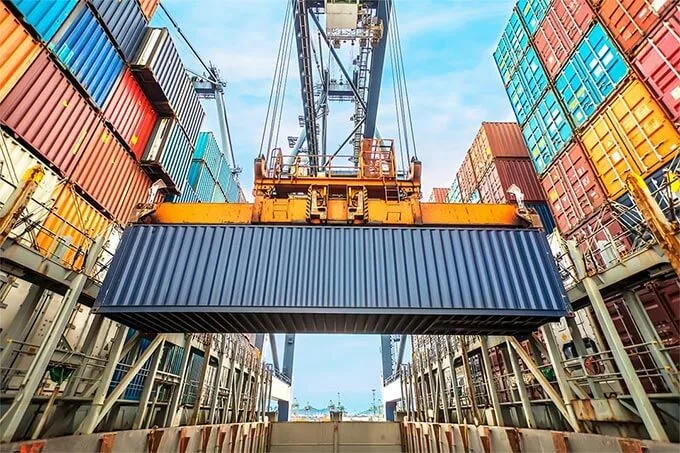
Scientists and consumers worldwide call for immediate climate action due to the ongoing threat of climate change. In countries like the Philippines, citizens are constantly experiencing environmental backlashes like flash floods, which can only worsen when not addressed immediately. It’s no secret that businesses contribute tremendously to ecological degradation, and there’s a great need for these entities to be more eco-friendly.
Sustainability involves recognizing that the production of goods has environmental, social, and health impacts—and performing certain measures to be as responsible in all mentioned areas as possible. It’s a morally sound practice and helps with profit generation. For a better picture, over 75% of surveyed Filipino consumers prefer brands with sustainable practices.
As a step toward being environmentally friendly, businesses can start with sustainable shipping. You can begin with small areas of your company and work your way up to be majorly sustainable.
Sustainable Shipping 101: How to Make Shipping More Sustainable
According to the International Maritime Organization (IMO), about 1 billion metric tons of carbon dioxide are emitted by shipping. It makes up 3% of global carbon dioxide emissions and may increase to 50% in the mid-century when no action is taken.
Moreover, producing packaging materials require hefty resources like energy, water, chemicals, petroleum, and more. The production process also emits greenhouse gases, heavy metals, and toxic contaminants. Sustainability is a loaded and complex issue. However, there are simple ways to make shipping more sustainable.
1. Use sustainable packaging
When it comes to shipping, you must observe proper packaging to protect merchandise from breaking. It consists of multiple layers of plastic, bubble wrap, and other non-biodegradable fillings. While the intent is well-meaning and practical, it takes approximately 1,000 years for plastic to degrade naturally. After use, they’re stuck in landfills and oceans for many years.
Thankfully, there are newer and equally effective alternatives to plastic, such as sustainable packaging for shipping. Switching to biodegradable or compostable packaging made of paper, mushrooms, seaweed, and cornstarch are good places to start.
2. Optimize your returns process
For any business involving shipping, returns are inevitable. It can also signal a growing and profitable business. However, returning goods can have negative environmental impacts like harmful gas emissions leading to air pollution.
You might consider shipping a new product without asking for the old one back to solve this problem. As a result, processing returns are simplified, and shipping pollution may decrease.
3. Choose sea freight when shipping in bulk
There are three types of shipping: land, air, and sea freight. Air and sea freight are typically used for bulk shipping; the latter is the lesser contributor to a business’s carbon footprint. Meanwhile, air shipping contributes 20 to 30 times more pollution than sea freight, emitting 500 grams of carbon dioxide per metric ton.
Ocean freight shipping typically dispatches longer than air. However, ships only emit 10 to 40 grams of carbon dioxide, and the IMO has mandated them to reduce sulfur emissions by 85%. Additionally, it’s best to encourage early orders from your customers and communicate your sustainability efforts to help manage their delivery time expectations.
4. Insulate your warehouse
Warehouse walls are usually made of thin metal. In turn, it provides little insulation leading to a waste of energy. During extreme weather, more power is necessary to regulate the temperature inside these warehouses.
Save energy by investing in the thinnest layer of insulation possible. Also, allow areas or ventilation to allow fresh air to pass through. Not only will it help the environment by using less electrical energy, but it can also help you save long-term in your energy usage.
5. Minimize packaging size
Packaging can be a dealbreaker in retail companies. Some brands like to impress their customers by excessively packaging their products and adding more fluff to their appearance than necessary. But with the public’s growing awareness of the environment, there are fewer people to impress with wasteful packaging.
Try sticking to your product’s size and package it according to its dimensions. You may also save shipping costs because smaller packages have lower shipping fees. If you can’t help it, it’s always best to make it a part of your marketing efforts to educate your customers about your sustainable shipping attempts. This way, you won’t leave them in the dark when they wonder why their once gigantic parcels shrink in size.
Sustainability is More Than Just a Trend
The word “sustainability” has often been a marketing buzzword lately. The problem is that it needs to seep into every organization’s inner workings to make an impactful difference on a bigger scale. As you review your operations, practicing sustainable shipping is an excellent way to start.
If you’re looking for a proven freight forwarding service in the Philippines that will help you with your sustainability efforts, consult Dash Cargo today!



